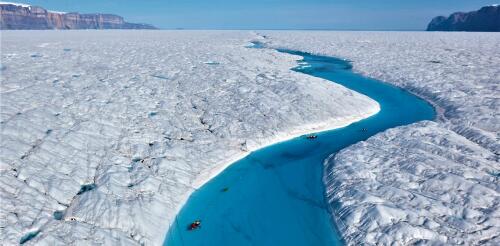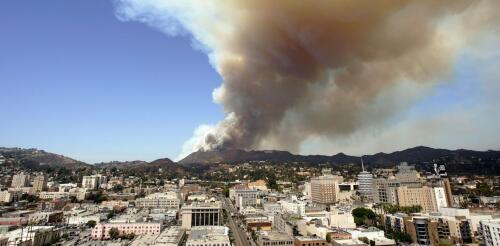Climate change
Climate change can seem like an insurmountable challenge. However, if you look closely at its causes, you’ll realize that history is filled with similar health and environmental threats that humanity has overcome. The main cause of climate change – carbon dioxide from the burning of fossil fuels – is really just another pollutant. And countries know how to reduce harmful pollutants. They did it with the pesticide DDT, lead paint and the power plant emissions that were causing acid rain, among many others. In each of those cases, growing public outcry eventually led to policy changes, despite pushback from industry. Once pressured by laws and regulations, industries ramped up production of safer solutions. I am an earth and environmental scientist, and my latest book, “Reclaiming Our Planet,” explores history’s lessons in overcoming seemingly insurmountable hazards. Here are a few examples: Banning DDT despite industry pushback DDT was the f...
I’m striding along the steep bank of a raging white-water torrent, and even though the canyon is only about the width of a highway, the river’s flow is greater than that of London’s Thames. The deafening roar and rumble of the cascading water is incredible – a humbling reminder of the raw power of nature. As I round a corner, I am awestruck at a completely surreal sight: A gaping fissure has opened in the riverbed, and it is swallowing the water in a massive whirlpool, sending up huge spumes of spray. This might sound like a computer-generated scene from a blockbuster action movie – but it’s real. Alun Hubbard stands beside a moulin forming in a meltwater stream on the Greenland ice sheet. Courtesy of Alun Hubbard A moulin is forming right in front of me on the Greenland ice sheet. Only this really shouldn’t be happening here – current scientific unders...
Over the past two decades, a staggering 21.8 million Americans found themselves living within 3 miles (5 kilometers) of a large wildfire. Most of those residents would have had to evacuate, and many would have been exposed to smoke and emotional trauma from the fire. Nearly 600,000 of them were directly exposed to the fire, with their homes inside the wildfire perimeter. Those statistics reflect how the number of people directly exposed to wildfires more than doubled from 2000 to 2019, my team’s new research shows. But while commentators often blame the rising risk on homebuilders pushing deeper into the wildland areas, we found that the population growth in these high-risk areas explained only a small part of the increase in the number of people who were exposed to wildfires. Instead, three-quarters of this trend was driven by intense fires growing out of control and encroaching on existing communities. A wildfire in 2017 dest...
Ocean temperatures have been off the charts since mid-March 2023, with the highest average levels in 40 years of satellite monitoring, and the impact is breaking through in disruptive ways around the world. The sea of Japan is more than 7 degrees Fahrenheit (4 degrees Celsius) warmer than average. The Indian monsoon, closely tied to conditions in the warm Indian Ocean, has been well below its expected strength. Spain, France, England and the whole Scandinavian Peninsula are also seeing rainfall far below normal, likely connected to an extraordinary marine heat wave in the eastern North Atlantic. Sea surface temperatures there have been 1.8 to 5 F (1 to 3 C) above average from the coast of Africa all the way to Iceland. So, what’s going on? Sea surface temperatures are running well above the average since satellite monitoring began. The thick black line is 2023. The orange line is 2022. The 1982-2011 average is the middle dashed li...
The National Environmental Policy Act, enacted in 1970, is widely viewed as a keystone U.S. environmental law. For any major federal action that affects the environment, such as building an interstate highway or licensing a nuclear power plant, NEPA requires relevant agencies to analyze environmental impacts, consider reasonable alternatives and accept public input. It also allows citizens to sue if they believe government has not complied. Critics argue that NEPA reviews delay projects and drive up costs. In May 2023 negotiations over raising the federal debt ceiling, President Joe Biden agreed to certain changes to NEPA reviews, which both the White House and congressional Republicans said would streamline permitting for infrastructure projects. Legal scholars J.B. Ruhl and James Salzman explain these changes and what they mean for protecting the environment and expanding clean energy production. What kinds of projects typically require NEPA reviews? The statutory text of NE...




